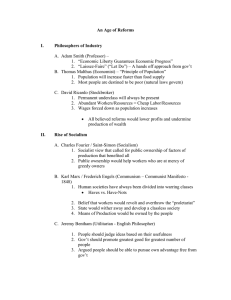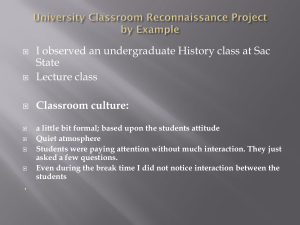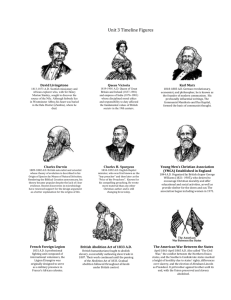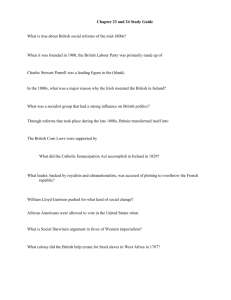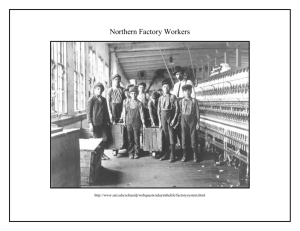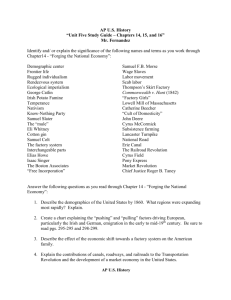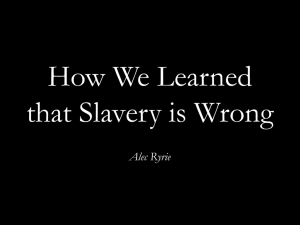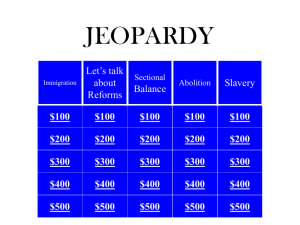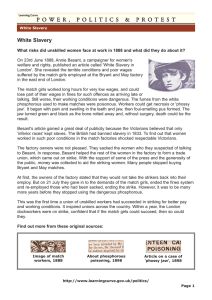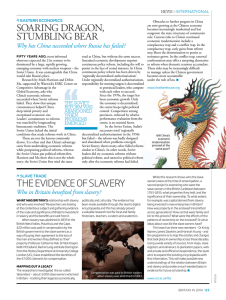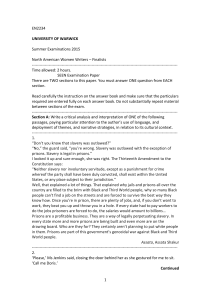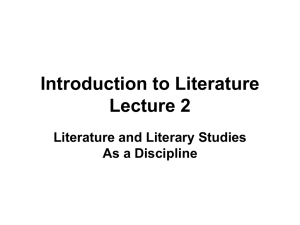Results of the Industrial Revolution
advertisement
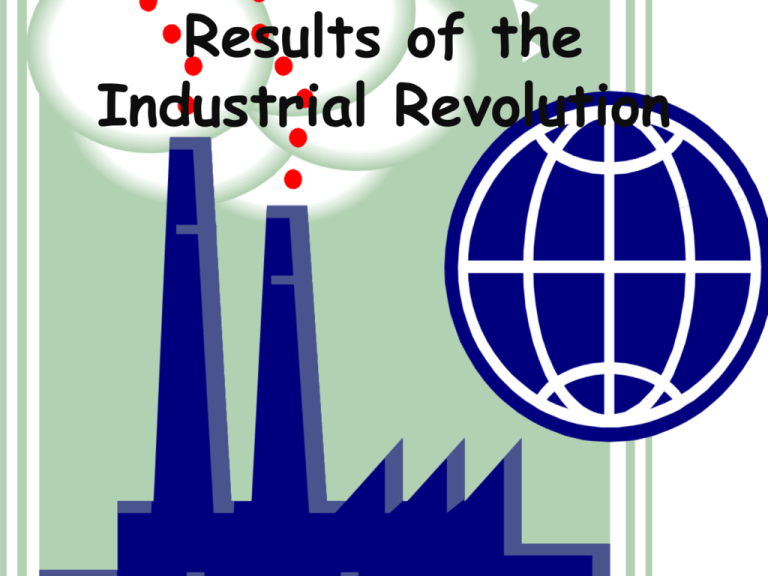
Results of the Industrial Revolution Results of the Industrial Revolution Union Movement Factory Act Child Labor Laws Abolition of Slavery Changes in Women’s rights • Changes in Education • Spread throughout the world- led to modern cities & a global economy • • • • • Reforms in Business • Labor reforms and Union movement • Many people thought the factory system treated workers poorly. Workers and reformers began to fight for more rights. -Unions speak for workers in a particular trade. -Collective bargaining: negotiations between workers and their employers. -If factory owners refused the union’s demands, then workers could strike (refuse to work). -British government did not like labor unions, but tolerated them after 1825 Reforms in Business cont. • Factory Act (1833) & Child Labor Laws *illegal to hire children under age 9 *9-12 years old (8 hours) and 13-17 years old (12 hours) *Children under 18 couldn’t work at night *1842 Mines Act-children & women couldn’t work underground *Ten Hours Act (1847)- 10 hour day for women & children Social Changes • Abolition of Slavery - William Wilberforce led the fight to end slavery. -Mixed motives behind abolition: cheap labor or slave labor? -It was abolished in Britain (1833) & United States (1865) Social Changes cont. • Women led reform movements to stop inequality of wages & work conditions. • Education - U.S. reformerHorace Mann favored free public education - set up public school systems in the 1850’s (USA) and late 1800’s (Britain) Social Changes cont. • Romanticism: -A new way of thinking that focused on human feelings, emotion and imagination, love of nature -Man’s natural place is in the countryside -depicted in art & literature (poetry) -Most romantics saw the Industrial Revolution as an attack on nature & human personality -Leader of English Romanticism was William Wordsworth The Daffodils I wandered lonely as a cloud That floats on high o’er vales and hills, When all at once I saw a crowd, A host, of golden daffodils; Beside the lake, beneath the trees, Fluttering and dancing in the breeze. The waves beside them danced, but they Out-did the sparkling waves in glee: A poet could not but be gay, In such a jocund company I gazed-and-gazed-but little thought What wealth the show to me had brought: ***Poem by William Wordsworth Spread of Industrialization • People (including children) went to Britain to study the latest ideas and techniques • Belgium, Germany & France industrialized after England= railroads, inventions etc. • United States-(After Civil War) = industrial/technological boom. Started with the textile industry • Created competition between industrialized nationscolonialism/imperialism increased due to need for raw materials • Poverty increased in less developed nations= global inequality
